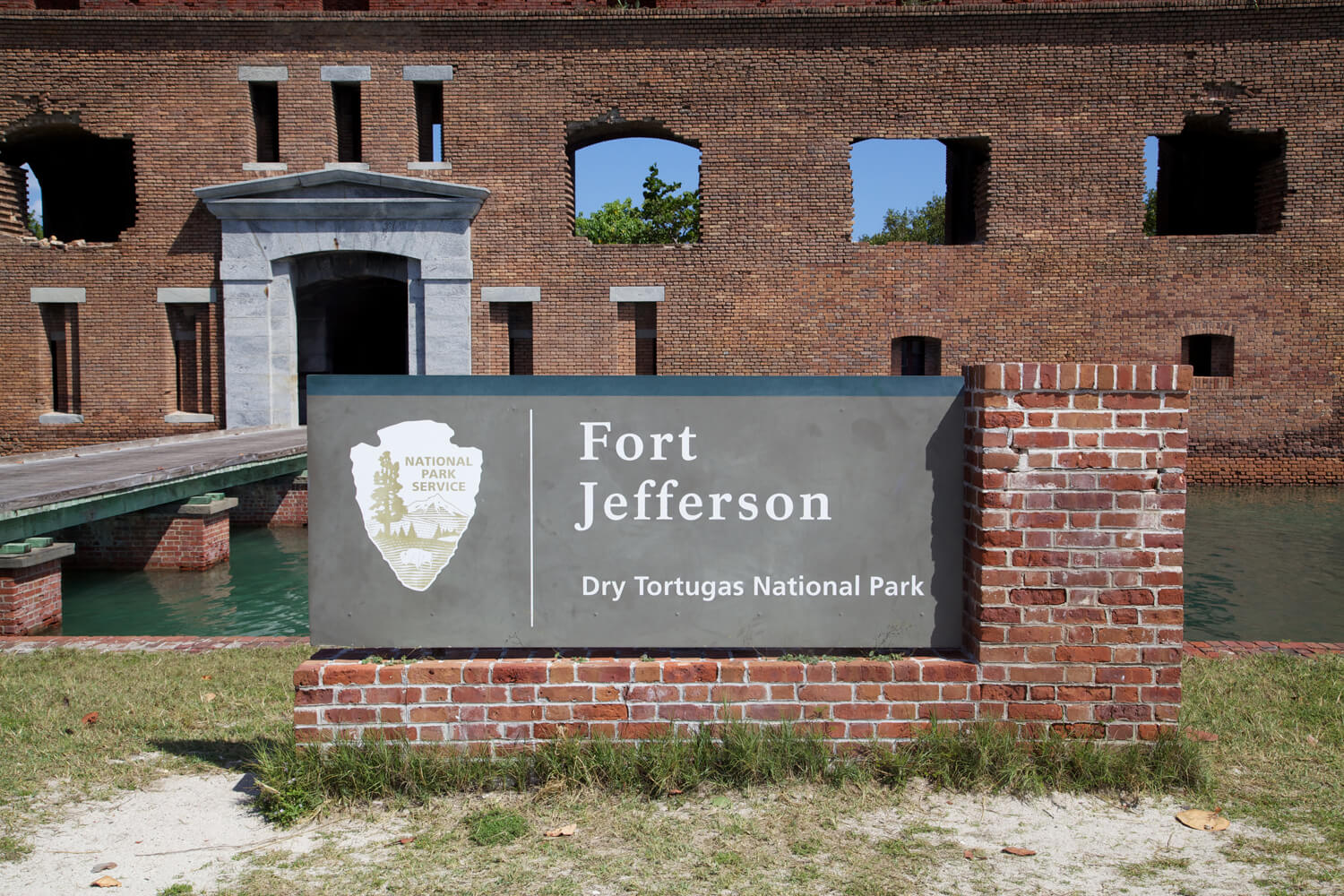Dry Tortugas National Park
Located: Florida - Established: October 26, 1992
The Park: Dry Tortugas National Park is comprised of 100 square miles of mostly open water. Within its boundaries, there are 7 small islands known as keys. Fort Jefferson, located on the Garden Key, is the best-known icon of the park. Built between 1846 and 1875, the all-masonry fort was designed to protect important shipping lanes; however, the Civil War interrupted its construction and it was never completed.
Dry Tortugas was established to protect the islands and marine ecosystems within its boundaries, to preserve Fort Jefferson and the underwater cultural resources (shipwrecks) and to allow the public to visit in a regulated manner.
Getting there: Dry Tortugas NP is located 70 west of Key West, FL. Access to this park is either by boat or seaplane. There are no services on the island, so visitors must plan to bring everything they need with them. The park has contracted with over 30 concessionaires who provide transportation to and from the islands.
When to visit: Dry Tortugas has essentially two seasons – winter and summer. Winter runs from November thru April and is influenced by strong cold fronts that can create strong winds and large swells. Summer begins in May and lasts thru October, which coincides with the Atlantic Hurricane Season. Benefits of a winter visit – cooler weather, lighter crowds. Benefits of a summer visit – ideal weather, excellent visibility for snorkeling and viewing marine life.
What to do: Most visitors come to tour Fort Jefferson; however, camping, snorkeling and diving about the coral reefs, wildlife viewing, world class bird watching, kayaking and canoeing are among the many other activities available to visitors of Dry Tortugas.
Geocaching, modern day treasure hunting, has also become a popular activity at Dry Tortugas. Bring your GPS devise and seek out the “treasures” buried about the islands!
Where to stay: There are no lodges or hotels at Dry Tortugas; however, there is a 10-site primitive campground on Garden Key, the island where Fort Jefferson is located. Campsites are let on a first-come, first-served basis. There is an overflow area in case a regular campsite is unavailable.
Transportation for those wishing to camp at Dry Tortugas is limited to the Yankee Freedom Ferry. Bring a tent, as tents are required camping gear on Dry Tortugas! Since there are no facilities on the island, you will also need to bring food and beverage!
Interior corridors of the Fort.
Memorable moment: The boat ride from Key West to Ft. Jefferson was a rough one. A storm had passed the night before making the waters very choppy. All passengers were advised to take Dramamine or some sort of motion sickness medicine. Terry and I took their advice. Unfortunately several did not and paid the price. Not only were the seas heaving...many passengers joined the chorus! Sea sickness aside, our most memorable moment was exploring Fort Jefferson and learning about its history.
Trivia: This park gets its name – Dry Tortugas – from two separate sources. The “tortugas” or turtles part of its name comes from Spanish explorer Juan Ponce de Leon who, in 1513, found these islands teeming with hawksbill, leatherback and loggerhead turtles. He named the islands las tortugas.
The 7 landmasses within the park boundaries receive an average annual rainfall of about 40 inches. Most of the rainfall comes during the hot summer months. Collecting and storing fresh water has always been a challenge for these islands. Because they lacked fresh water, early nautical charts indicated these islands to be “dry,” thus the name Dry Tortugas evolved.
Banner: Remnants of an old pier at Fort Jefferson.
Experience these Check List:
- Stop by the Eco Discovery Center or the Bright Visitor Center, both in Key West
- Get there via boat or sea plane
- Explore Fort Jefferson and the Bookstore
- Snorkel the waters of the Caribbean
- Take Dramamine before departing!
Terry trekking Tortugas. Park visit #53.





